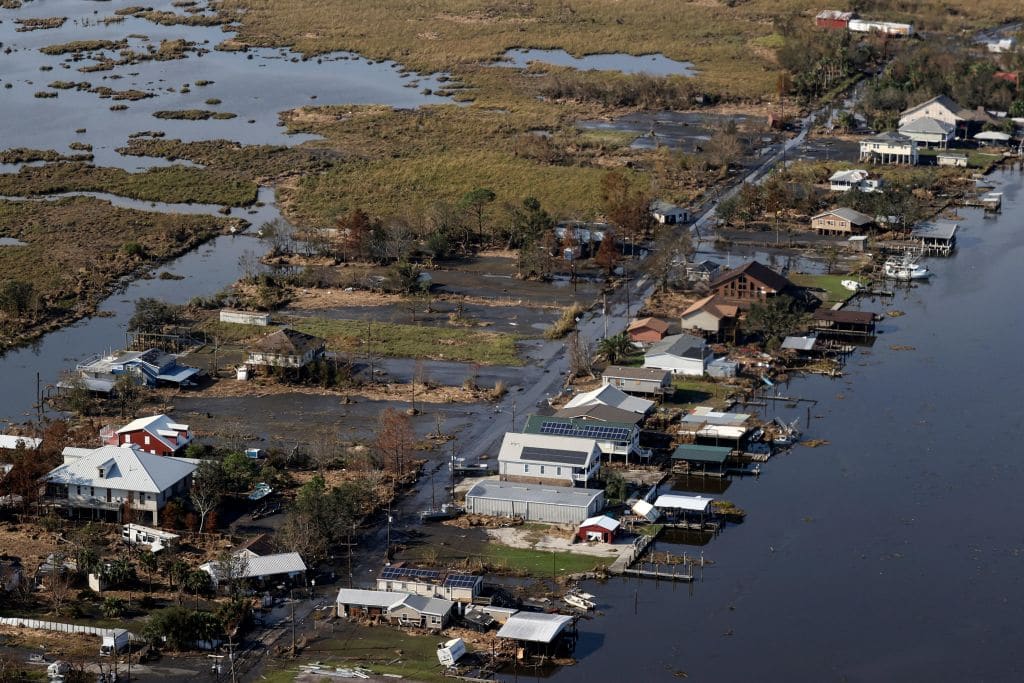
Increased Flooding Due to Climate Change Will ‘Disproportionately’ Affect Black Communities, Study Finds

Climate-caused flooding will increase in the next 30 years, causing billions of dollars of losses that will disproportionately affect Black communities in the United States, according to a new study. Flood risk will increase by 26 percent, especially on the Gulf and Atlantic Coasts, where there is a greater threat of sea level rise and hurricanes are becoming more intense.
The study, “Inequitable patterns of US flood risk in the Anthropocene,” was conducted by a team of U.S. and U.K.-based researchers and was published in the journal Nature Climate Change. In the study, researchers found that average annual flooding costs could increase to $40.6 billion by 2050, compared with the current cost of $32 billion.
“What we’re seeing is that those with the least capacity to respond to these disasters are being asked to shoulder the burden,” said the study’s lead author Dr. Oliver Wing, who is an honorary research fellow at Bristol University’s Cabot Institute for the Environment, as NBC News reported. “That’s just fundamentally wrong.”
The study’s authors found that 75 percent of the increase in average yearly exposure to flooding by 2050 will be due to population growth, while the changing of rainfall patterns, rising sea levels and more intense hurricanes will make up 19 percent of the increase in risk, Carbon Brief reported.
Currently, low-income and white communities are most impacted by flooding in the U.S. according to the study, but that will change in the next three decades. The results of the study will allow for adaptation measures to be focused on areas that are the most vulnerable.
“A study of this granularity has never been deployed at a national scale like this before – and so, in many ways, the results are brand new,” Dr. Wing told Carbon Brief.
In the U.S., about 90 percent of natural disasters involve flooding. According to Carbon Brief, the damage of an inch of flood water to a home can cost up to $25,000, and the total flood damage in the U.S. from 2010 to 2018 was $17 billion.
Low-income communities are more often located in areas prone to flooding, tend to have less resources to deal with flooding and have a more difficult time accessing cleanup funding, senior climate scientist Kristina Dahl told ABC News.
“That raises very important social justice implications for how we ensure that the policies to deal with this address this quite severe inequity,” said Dr. Wing, as ABC News reported.
Dr. Wing said that the study used a “middle-of-the-road” model in which emissions are predicted by the Intergovernmental Panel on Climate Change to peak and then begin to decline around 2040.
This means that any lowering of carbon emissions over the next 30 years won’t have an effect on the predictions of the study, which, according to Dr. Wing, are “climatically locked in” and will not be affected by changes in greenhouse gas emissions for decades, reported ABC News.
“We could decarbonize right now, and, of course, we should do if we don’t want these risks, to get any worse beyond 2050,” Dr. Wing said. “But decarbonizing right now will not have any impact on the conclusions of our paper.”
Shifts in population demographics will also have to be taken into consideration in dealing with the impacts of the climate crisis.
“If we want to understand flood risk in the future, the most important thing is understanding where people are going to live, more so than how weather patterns are changing,” said Dr. Wing, as ABC News reported.
Since flood risks are almost certain to increase, bolstering infrastructure will be an ultra-important consideration in weathering the next 30 years of the climate crisis.
“The infrastructure we have was designed for the climate of the past, and that’s not the climate that we have today, and it’s certainly not the climate we’re going to have in the future. So we really desperately need to invest in building up our infrastructure and community-level resilience to extreme weather,” Dr. Wing said.

 233k
233k  41k
41k  Subscribe
Subscribe 